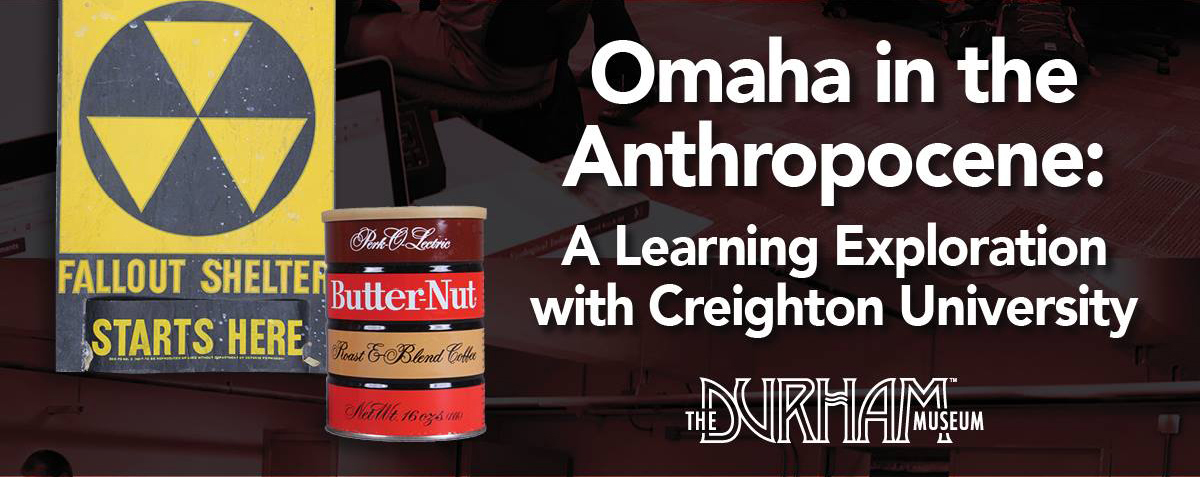
“Omaha in the Anthropocene” is a collaborative project between The Durham Museum and the senior-level “Global Environmental History” course at Creighton University (EVS/HIS 488). Between the Fall of 2017 and Fall of 2018, students selected objects from The Durham collection as the basis for their final project research, which involved exploring the significance of these everyday objects in local, global, and environmental history. The potential connections between these objects and larger historical and environmental themes were numerous. For example, students that selected coffee cans from the “Butter-Nut” Coffee company in Omaha might research the company’s history of business, the history of coffee domestication, the global distribution of its cultivation, or even the mining and processing history of tin or aluminum the coffee came packaged in.
Students largely focused on one connection, rather than attempting to examine all potential relationships. These connections took on many forms. Some students discovered ties that united Omaha’s railroading present to changes that occurred more than two centuries ago and half a globe away, whereas others were able to link the very same railroads to more modern, local systems of environmental change and commerce. In many cases, The Durham Museum had very little information about these objects prior to student research. The most enduring legacy of their work, therefore, will be a richer record of the objects themselves.This work will continue in subsequent years as new courses add additional exhibits and investigate new objects.
During this project, students discovered how objects in The Durham Museum collections connected the Omaha community with the global environment. They interpreted Nebraskan history through the lens of global, environmental change for a public audience. From the Spring of 2018 until the Spring of 2019, the students’ findings will be on display at The Durham Museum.
